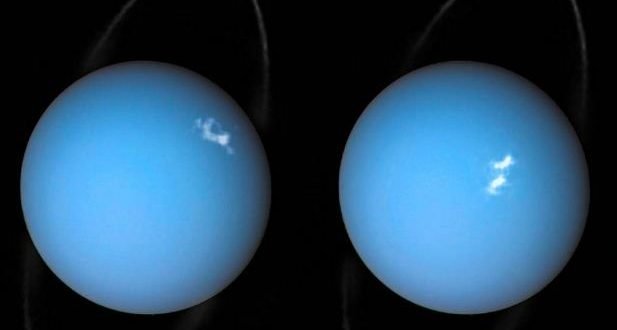For the first time, scientists from the University of Oxford studied the atmosphere that surrounds this planet. These are clouds composed of hydrogen sulfide, recognized for its uncomfortable rotten egg stench.
There is no doubt that science usually meets some discoveries that are presented in a rather curious way. This is the case of a study published in the scientific journal Nature Astronomy and conducted by scientists at the University of Oxford in which they concluded that the atmosphere on Uranus is composed of a gas that makes the planet smell “rotten eggs”.
By using an instrument known to scientists as the Near Infrared Integrated Field Spectrometer (NIFS), located at the Gemini North telescope in Hawaii, the researchers set out on a mission to study the chemical composition of the clouds surrounding Uranus. A question that, in addition, was sought to solve for the first time. They found that these gases are composed of hydrogen sulfide gas (H2S) – or hydrogen sulfide – a compound that has a distinctive smell of rotten eggs and whose aroma is even harmful.
“If ever an unfortunate human descended through the clouds of Uranus, he would encounter very unpleasant and stinking conditions,” Patrick Irwin, co-author of the study, told the BBC. But he also affirmed that, if ever someone gets close enough to Uranus, he would fall dead long before he felt the peculiar smell. “Asphyxia and exposure in the negative atmosphere of 200 degrees Celsius … would charge their price long before the smell.”
The truth is that the recent study not only reveals the bad smell of the planet but also gives some clues as to how Uranus’ atmosphere resembles that of other great planets, such as Jupiter and Saturn. An aspect that can help decipher the ancient history of the planets of the solar system.
In fact, scientists were speculating that the clouds, both Uranus and Neptune, had ammoniacal ice (NH3), a substance present in Jupiter and Saturn. However, to determine it only with the information recorded by the ground-based telescopes and the Voyager 2 spacecraft did not allow conclusive data. This new study, however, points out that there are several atmospheric differences of the planets.
 MobiTechInfo
MobiTechInfo








